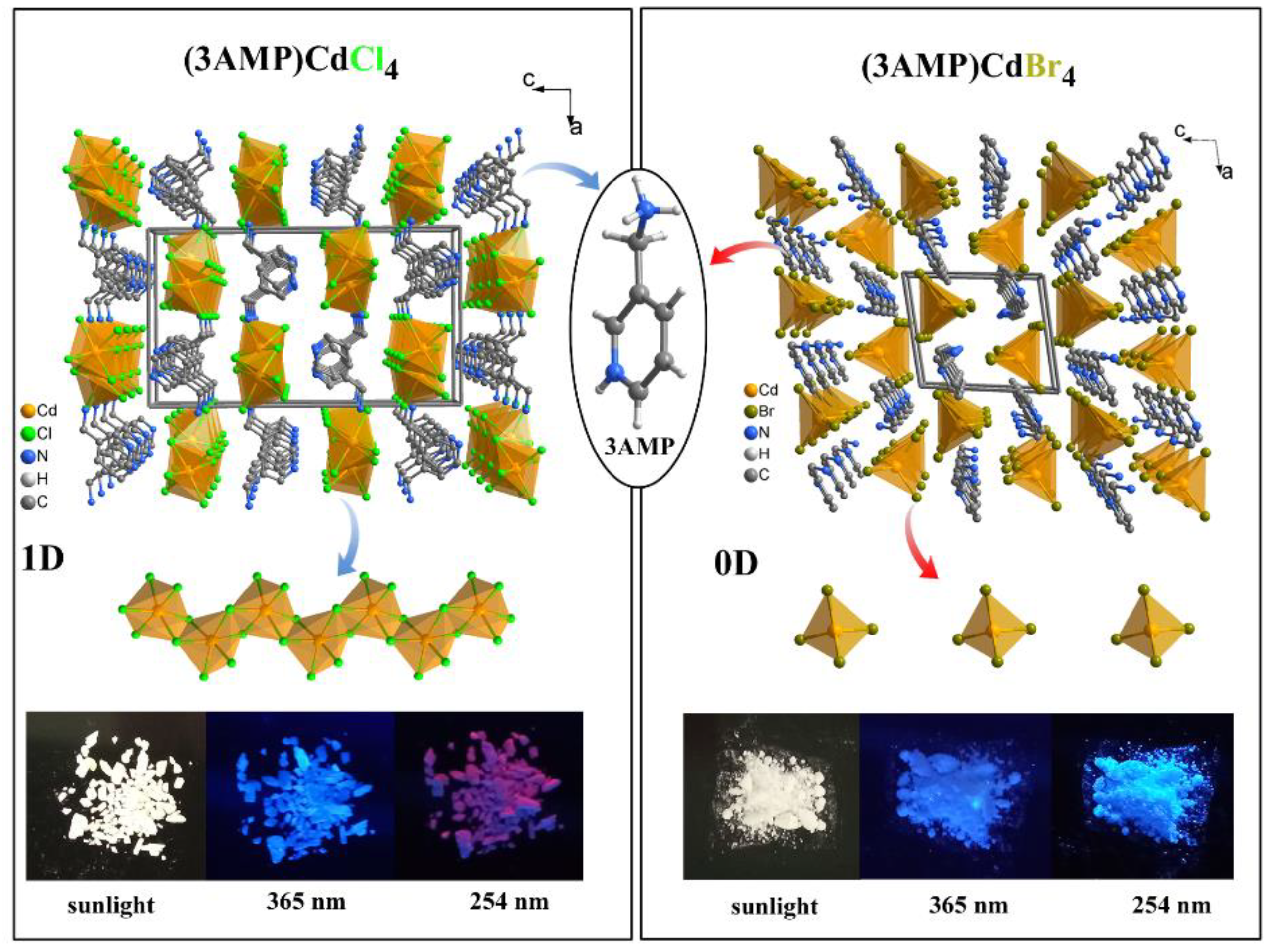Structure-Dependent Photoluminescence in Two Low-Dimensional Organic–Inorganic Hybrids †
Author Contributions
Funding
Institutional Review Board Statement
Informed Consent Statement
Data Availability Statement
Conflicts of Interest
Reference
- Kundu, J.; Das, D.K. Low dimensional, broadband, luminescent organic-inorganic hybrid materials for lighting applications. Eur. J. Inorg. Chem. 2021, 2021, 4508–4520. [Google Scholar] [CrossRef]

Publisher’s Note: MDPI stays neutral with regard to jurisdictional claims in published maps and institutional affiliations. |
© 2022 by the authors. Licensee MDPI, Basel, Switzerland. This article is an open access article distributed under the terms and conditions of the Creative Commons Attribution (CC BY) license (https://creativecommons.org/licenses/by/4.0/).
Share and Cite
Verissimo, L.; Zelenovskii, P.; Kholkin, A.; Rocha, J.; Xu, W.-J. Structure-Dependent Photoluminescence in Two Low-Dimensional Organic–Inorganic Hybrids. Mater. Proc. 2022, 8, 101. https://doi.org/10.3390/materproc2022008101
Verissimo L, Zelenovskii P, Kholkin A, Rocha J, Xu W-J. Structure-Dependent Photoluminescence in Two Low-Dimensional Organic–Inorganic Hybrids. Materials Proceedings. 2022; 8(1):101. https://doi.org/10.3390/materproc2022008101
Chicago/Turabian StyleVerissimo, Luis, Pavel Zelenovskii, Andrei Kholkin, João Rocha, and Wei-Jian Xu. 2022. "Structure-Dependent Photoluminescence in Two Low-Dimensional Organic–Inorganic Hybrids" Materials Proceedings 8, no. 1: 101. https://doi.org/10.3390/materproc2022008101
APA StyleVerissimo, L., Zelenovskii, P., Kholkin, A., Rocha, J., & Xu, W.-J. (2022). Structure-Dependent Photoluminescence in Two Low-Dimensional Organic–Inorganic Hybrids. Materials Proceedings, 8(1), 101. https://doi.org/10.3390/materproc2022008101








